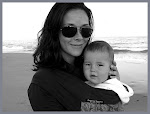
MEDBASICS at MOMPREP!
This fall MEDBASICS has teamed up with
Rosie Pope Maternity & MOMPREP to offer parents & caregivers the MUST TAKE COURSE,
"Think Like an ER Doctor"
If you asked an Emergency Room doctor how they stay so calm, cool and collected during a medical emergency, what do you think they would say?
A. "I've spent my whole life preparing for this moment!"
B. "I'm not really a doctor but I play one on TV."
C. "I simply know the critical questions to ask and the necessary actions I should take."
Of course there is some truth in answer A and some entertainment value in answer B (love Grey's Anatomy- seriously? seriously.) but the correct answer is C which is fantastic news for parents and caregivers because these critical questions and actions that allow the ER docs to remain calm, cool and collected can be learned by you.
For the first time ever at MomPrep, MEDBASICS is providing the "Think Like an ER Doctor" course. Led by an Emergency Room Physician and Registered Nurse, you will learn the critical questions you need to ask and the necessary actions you should take to help your child in a variety of medical emergencies including, Anaphylaxis, Dangerous Rashes, Extremely High Fever, Head Injuries, Life-threatening Poisonings and more!
Find out exactly when you should call 9-1-1, when to call your Pediatrician and when monitoring your child at home is enough. Understand what ER doctors really want to know from parents and discover the insider's secrets to traversing the Emergency Room as painlessly as possible. Parents and caregivers should not miss this demystifying and empowering course.
Each participant will receive a MEDBASICS Critical Q&A (Questions & Actions) Pathway for each emergency discussed. We recommend taking this information wherever your child goes.
In New York City? Check out the MOMPREP Open House and Rosie Pope Maternity on the Upper East Side, November 3rd, 5:30-8:30!



















